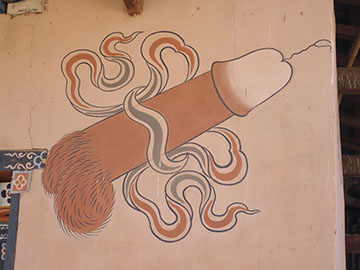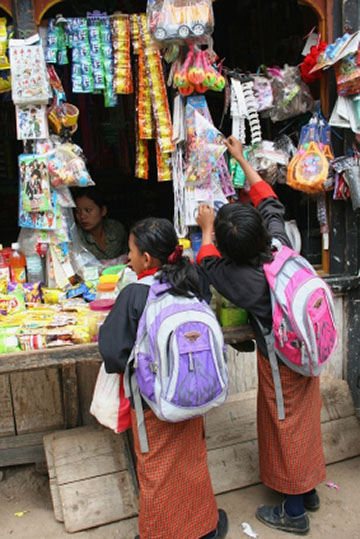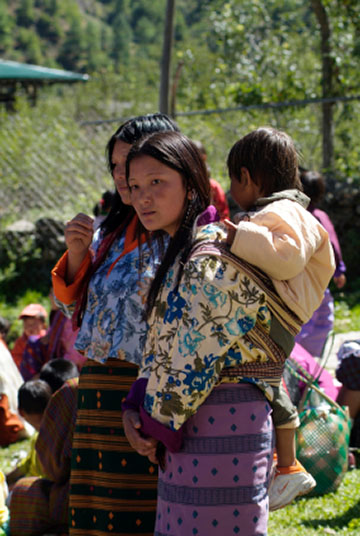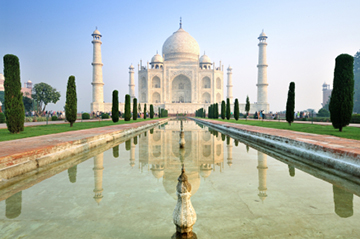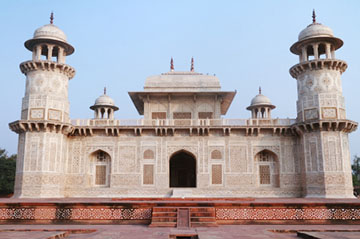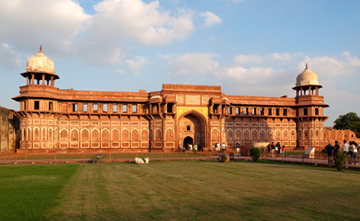Trip Highlights
Trip DetailsBhutan, the Land of the Thunder Dragon, is a mystical and medieval kingdom situated along the southern slopes of the Himalayan range between India and Tibet. Here the Buddhist culture remains largely untouched by the outside world where people and nature coexist in a sacred balance. Bhutan’s ecosystem of valleys and mountains, virgin forests and crystal lakes is unsurpassed in its pristine beauty. This tiny kingdom, where the people wear the colorful national dress, is a hidden country slowly opening up to the modern world but with a keen balance of its rich traditions. On this adventure we trek through majestic mountains and lush valleys, attend colorful festivals, explore ancient monasteries clinging to cliff sides, and visit ornate temples and colorful fortresses. Prior to this adventure we visit the Taj Mahal and other attractions near New Dehli, India. TRIP ITINERARYDay 1. Saturday (10/5). Depart USADay 2. Sunday (10/6). Arrive DelhiWe arrive in Delhi late in the evening, clear customs and meet the transfer agent who will escort us to the nearby comfortable Hotel Shanti Palace, a 4 star facility, for a good night’s rest after the long international flight. Day 3. Monday (10/7). Delhi – Taj MahalWe drive southeast for about 4 hours through the pastoral countryside in our private automobile with our cultural guide to Agra, which was the imperial capital of India in the 16th and 17th centuries. The Taj Mahal (Crown Palace) is regarded as one of the seven wonders of the world, and in 1983 it became a UNESCO World Heritage Site. It was built by a Muslim, Emperor Shah Jahan, in memory of his wife, the queen, Mumtaz Mahal. It houses the mausoleum of the queen, and Shah is also entombed here. The Taj Mahal is built entirely of white marble and has a stunning visual beauty, particularly at dawn and sunset. It was constructed over a period of twenty-two years (1631-1653) and required twenty thousand workers. The central dome is fifty-eight feet in diameter and extends to a height of 213 feet. It is flanked by four subsidiary domed chambers and there are four graceful, slender minarets rising to a height of 162.5 feet. The entire mausoleum, inside as well as outside, is decorated with an inlaid design of flowers and calligraphy using precious gems such as agate and jasper. This beautiful mausoleum is part of a vast complex comprised of a main gateway, an elaborate garden, a mosque, a guest house, and several other palatial buildings. The large garden contains four reflecting pools dividing it at the center, and each of these four sections is further subdivided. When we arrive in Agra we have lunch and then check into our hotel. In the afternoon we visit the Taj Mahal with our cultural guide and then have time to explore Agra. We lodge at the Radisson Hotel, a 5 star facility located in the city center. The hotel has restaurants, a bar, pool, fitness center, and fee high speed internet. B,L,D Day 4. Tuesday (10/8). Agra Fort – Itimad-ud-Daulah – DelhiEarly in the morning we return to the Taj Mahal for a brief visit to see it in all its splendor at sunrise. We return to our hotel, breakfast and check out. Next, we visit the colorful Agra Fort across the river from the Taj Mahal. The Fort, which is spread out over 1,000 acres, was built of red sandstone over a period of 8 years, 1565-1573, by Akbar the Great. Our tour will focus on the Jehanqir Mahal, the highlight of the complex. This two-story building was the women’s palace and includes a temple and a courtyard featuring a blend of decorative styles After lunch, we visit the Itimad-ud-Daulah, a picturesque Mughal mausoleum built in the 1620s. This mausoleum is described as the ‘jewel box’, and often regarded as a draft of the Taj Mahal. Along with the main building, there are numerous outbuildings and gardens. We return to Delhi and the Shanti Place Hotel near the airport, have dinner and get ready for our adventure in Bhutan. B,L,D Day 5. Wednesday (10/9). Delhi – Paro (Bhutan)In the morning we travel from Delhi to Paro, flying east along the south side of the Himalayan Mountains and have “once in a lifetime” views of the world’s tallest mountains including the majestic Mount Everest (29,035 feet), Lhotse (27,940 feet), Cho Oyu (26,906 feet), Makalu (27,765 feet), and many other tall world class peaks. We meet our guide at the airport and are cordially escorted to the Tashi Namgay Resort, a 4 star facility located on 5 acres on a hill outside of town in a peaceful environment overlooking the Chu River. Amenities include cable TV, minibar, telephone, gym, and a restaurant with Bhutanese and international cuisines. Paro is a charming small mountain town located on the Paro River in a wide and verdant valley characterized by rice fields, apple and peach orchards, and willow trees. The sacred, snow-capped, 24,035 foot tall Mount Chomolhari majestically towers over the valley and the town. Paro has many sacred and historic buildings and the main street is lined with colorful painted wooden shop fronts and restaurants. After checking into our hotel, we have the rest of afternoon free to relax and explore the town and meet the people of Bhutan. In the evening we have a welcome dinner and meet our guides. B,L,D Day 6. Thursday (10/10). Hike to Tiger’s Nest MonasteryToday we visit the Tiger’s Nest Monastery (Taktshang Goemba), the most famous of Bhutan’s monasteries. It is perched on the side of a cliff 2,950 feet above the valley floor and contains 13 holy places including three temples. The spiritual leader Guru Rinpoche, who first brought Buddhism to Bhutan in the 7th century, is said to have flown there on the back of a tigress to meditate in a cave where the building now stands. The only way to get to the monastery is to hike up the steep slope through an oak and rhododendron forest. With our guide we will visit the temples and the cave Rinpoche meditated in for three months. We have lunch at the monastery and enjoy fantastic views of the Paro Valley and the Himalayan Mountains. The path to enlightenment is lonely and narrow for monks at the monastery, who take turns meditating alone for three years, three months, three weeks and three days. If we wish, we can have a shorter meditation at the monastery before we leisurely hike down to the valley. On the way down we have the opportunity to visit the National Museum and learn about the natural environment and history of Bhutan. We will also see the Paro Dzong (fortress) and its traditional cantilever bridge over the Paro River. In the evening we continue our exploration of the exotic mountain town of Paro. We return to the Tashi Namgay Resort for dinner and a relaxing evening, and pack for the trek. B,L,D Days 6-10. Friday-Tuesday (10/11-10/15). Druk Path TrekThe Druk Path Trek, the most popular trek in Bhutan, follows an old trading route across the chain of mountains that separate the Paro and Thimpu Valleys. On this trek we have contact with the people and the culture, enjoy the pastoral countryside, and have views of Bhutan’s most spectacular mountain scenery in this mythic kingdom. We walk 3-5 hours per day following a forest trail up to alpine yak pastures, and once above tree line we have spectacular views of the Himalayan Mountains along the Tibetan border including Chomolhari, Litchu Drake and Gangkar Pusum, the tallest mountain (24,836 feet) in Bhutan. We enjoy the alpine scenery, the rural mountain culture, pristine lakes, lush valleys, temples, and monasteries. We reach a maximum elevation of 13,802 on the pass separating the valleys. While on trek we will be accompanied by a guide, cook, assistants, and horsemen. Horses will carry all our supplies including our duffle bags. While hiking we carry a daypack for our camera, water, snacks, wind parka, etc. We will have private tents for sleeping and kitchen, dining and toilet tents. Trek Day 1. Friday. Paro – Jele Dzong(6 miles; 4-5 hours; start at 8,102 feet & end at 11,316 feet) After breakfast at our hotel, we drive to the National Museum and start the trek. Today the trail is a gradual uphill climb through temperate rainforests and then through a dense coniferous forest where we will see many species of indigenous birds and mammals. We have magnificent views of snow-capped mountains including the sacred Chomolhari. Along the trail we pass orchards and stone houses and talk with the local farmers. We make camp in a meadow surrounded by a rhododendron forest. Yak herders camp here regularly with the assorted herds of yaks. Just above the camp is Jele La Dzong and Jele Dzong, old fortresses mostly in ruin, and Lhakhang with the statue of Budda. B,L,D Trek Day 2. Saturday. Jele Dzong – Jangchulakha(6 miles; 3-4 hours; start at 11,316 & end at 12,398 feet) At the beginning of today’s trek we hike about 900 feet up the hill to visit the Jele Dzong, which was the rest house of Bhutan’s second king and is now a monastic institute. We continue and hike through thick alpine forests and rhododendrons to a pass, Jele La, at 11,447 feet and then walk along a ridge. We have fascinating views of the Paro Valley and Chomolhari and other snow-capped peaks of the Himalayas along the border with Tibet. We will likely encounter yak herders camped in their usual black woven yak hair tents at our campsite. We will have the opportunity to talk with the herders and learn about their way of life. If we are lucky, we will hear and see the beautiful Monal pheasant. B,L,D Trek Day 3. Sunday. Jangchulakha – Jimilangtso Lake(7 miles; 4 hours; start at 12,398 & end at 12,726 feet) The trail climbs steeply to the Jangchulakha Pass at 13,776 feet, from which we have sensational views of Jichu Drake (22,923 feet) and Gangka Puensum, Bhutan’s highest mountain, as well as the lush green valleys below. After we cross the pass we hike down to Jimilangtso Lake to our campsite. These lakes are known for their giant sized trout. B,L,D Trek Day 4. Monday. Jimilangtso Lake – Simikot Tsho(7 miles; 4 hours; start at 12,726 & end at 13,251 feet) The trail proceeds from the lower end of the lake to traverse along the side of a ridge, and then descends to a stone shelter before it climbs to a summit at 13,284 feet overlooking Janetsho Lake. We continue and camp close to Lake Simkota at 13,251 feet. Yak herders camp here too, and their yak graze around the lake. We will again have the opportunity to visit with them and learn of their lifestyle. B,L,D Trek Day 5. Tuesday. Simikot Tsho – Phajoding – Thimphu(9 miles; 5 hours; start at 13,251 & end at 12,694 feet) We begin with a gradual climb up to Phume La (13,802 feet), the highest elevation of the trek. We will have beautiful views of Mt. Gangkhar Punsum and other Himalayan peaks, and can see the entire Thimphu Valley. The trail descends through trees to the small community of Phajoding. The trail continues through a blue pine forest and downhill to Thimphu. We continue to our hotel and in the evening we dine and explore the capitol of Bhutan. We lodge at the Hotel Galingkha, a 4 star facililty located in the heart of the city. The hotel has a bar, restaurant with Bhutanese and international cuisine, Wi-Fi, laundry service, TV, and room refrigerators. B,L,D Day 11. Wednesday (10/16). Thimphu – PunakhaAfter a hearty breakfast, we drive about 40 miles in our private van to the town of Punakha, located in a beautiful and fertile valley at the junction of two rivers. Rice, bananas and oranges are common crops grown in this subtropical valley. Our route takes us over the Dochu La Pass at 10,170 feet, where we stop for views of the magnificent Himalayan Mountains to the north. From the pass we drive down through forests of rhododendron, fir and hemlock, and past fields of rice along the Punakha River. We check into the Hotel Meripuensum and after lunch visit the Punakha Dzong (fortress), perhaps Bhutan’s most impressive fortress, located at the junction of two rivers. Next we drive up the valley for 8 miles, cross the river and then hike about 45 minutes past fields of chilies, beans and fragrant peppers to the Khamsum Yulley Namgyel Chorten, a 96 foot tall domed Buddhist shrine located on a hill overlooking the valley. The shrine is decorated with elaborate paintings of Old Sect Buddhism and has elephant heads, snow lions and even a hairy yeti. We hike to the top of the shrine for views of the valley and the snow-capped mountains. We hike back down the trail and drive back to our comfortable hotel for a relaxing evening, dinner, and another opportunity to explore the town. B,L,D Day 12. Thursday (10/17). Punakha – BumthangToday we drive to the Bumthang region of Bhutan, a complex of four lush agricultural valleys with ancient traditions, monasteries and temples, and the cultural heartland of Bhutan. We drive along a spectacular winding road, cross the 10,823 foot Pele La Pass, observe grazing yaks, and proceed to the village of Trongsa for lunch. Trongsa is a pleasant sleepy village lined with whitewashed shops decorated with potted plants. After lunch we visit the Trongsa Dzong (fortress), the masterpiece of Bhutanese architecture, spectacularly perched above the roaring Mangde River and often in the clouds and mist. We next stop at a yathra (textile weaving) factory and watch the weavers at their looms. Hand woven fabrics are the pride of Bhutan. The fabrics of this factory are designed with patterns unique to the Bumthang region. Centuries of tradition have honed the technique of textile dying, weaving and stitching. These colorful textiles are Bhutan’s premier handcraft. We check into the Peling Hotel, a 4 star facility which has telephone, internet connection, a restaurant serving Bhutanese, Indian and continental cuisine, and a lounge with local and imported wines. It is also possible to get a traditional healing medical herb bath. B,L,D Day 13. Friday(10/18). Jambay Lhakhang FestivalToday we attend the tshechu, an annual medieval religious festival held in the courtyard of the Jambay Lhakhang, one of the oldest temples in the country and built around the 7th century. The festival commemorates the teachings of Guru Rinpoche, the Tantric Master who brought Buddhism to Bhutan. During the festival monks and laymen masked and in colorful costumes perform traditional medieval folk dances. The dancers take on aspects of wrathful and compassionate deities, heroes, demons and animals, and symbolize the fight between good and evil. During the dance clowns mimic the dancers and ask the audience for money in exchange for a blessing from the wooden phallus they carry. The first night of the festival opens up with the stunning Black Hat Dance and ends with a special fire ceremony dance at midnight. The monks, with their faces covered by masks, perform the dance completely naked in order to augur a good harvest, sanctify the area and purify the onlookers from sins. After the midnight dance we return to the comfortable Peling Hotel. B,L,D Day 14. Saturday (10/19). Bumthang – WangdueWe begin the day with a visit to the weekend market where traditionally dressed shop keepers sell hand-woven fabrics, carved masks, woven baskets, silk paintings, wooden bowls, handmade paper, finely-crafted metal objects, and more. We stop for lunch at Chendebji Resort, a popular lunch stop with a gift shop run by a renowned artist. We visit the nearby Chendebji Chorten (shrine) built in the 18th century in the Nepalese style with four eyes painted at the four cardinal points. We continue to the village of Wangdue and check into the Meripuensum Resort Hotel, located on a hill with panoramic views to the river and valley. Hotel amenities include restaurant, bar, cable TV, telephones, internet access, and laundry service. B,L,D Day 15. Sunday (10/20). Wangdue – ParoToday we return to Paro and make many stops along the way. We first stop is at the Metshina Village where we walk 30 minutes through the rice fields to Chimi Lhakhang, a fertility temple or monastery built in 1499 by the Divine Madman or the maverick Saint Drukpa Kunley. Phallic symbols dominate the entire area including the temple, as the founding monk had something of a passion for women. If you wish, you can receive the blessing from the Lama’s wooden phallus. After the blessings we continue our drive to Paro and stop in Thimphu for the weekend Market on the bank of the Thimphu River, where people from nearby villages sell their farm products. This is the busiest and brightest market in the country. We will stroll through the market to see the rich variety of food crops, including fiery chilies, cheese, mangoes, and much more. Other products in the market include handicrafts and household items. Next, we have lunch and continue our drive to Paro. Later in the evening, we visit a traditional farmhouse to see how the local people live. We check into the Trashi Namgay Resort Hotel for our last night in Bhutan. B,L,D Day 16. Monday (10/21). Paro – DelhiWe are escorted to the airport, say farewell to our guide, and catch our early morning flight to Delhi. We arrive in Delhi late in the morning and are escorted to our day room at the Shanti Palace Hotel near the international airport. After lunch, we visit the old town of Delhi to discover the diversity and color of Delhi. We ride in a rickshaw and then visit nearby attractions including the India Gate, Raj Ghat, the crimination site of Mahatma Gandhi, Lotus Temple, and President’s house. We return to our hotel, have dinner and then head to the airport for our return flight home. B,L,D COSTSLAND COST: Costs below are based on US dollars with double room occupancy. Entire Trip Days 1-16: $3,500 Bhutan Only (minus Days 3 & 4 in India: $3,000 COST INCLUDES: All lodging including 10 nights in 3,4 & 5 star hotels, 4 nights in tents and one day room near the airport in Delhi; all land transportation; airport hotel transfers; meals; entrance fees to monuments; American tour director; Bhutanese tour director and guide; and Indian cultural guides. COST DOES NOT INCLUDE: Personal expenses, drinks and alcoholic beverages, travel insurance, international air fares to India, international air fare to Bhutan, and tips for guides. International Airfare Cost Estimates: East Coast USA to Delhi $1,400. Delhi to Paro Bhutan $790. TRIP GRADEThis trip is rated moderate to strenuous in terms of difficulty. During the 5 day trek, we hike 3-5 hours per day on well-maintained trails for 6-9 miles per day at elevations ranging from about 11,300 to 13,800 feet, and some days have elevation gains of over 3,000 feet. We camp for 4 nights and the rest of the time we lodge in 3, 4 and 5 star hotels. REGISTRATION AND INFORMATIONIf you would like additional information, e-mail us at info@adventureboundmen.com, or call us locally at 303-449-0990 or toll free at 1-877-440-0990. Our office hours are 8:00 a.m. to 12:00 p.m. and 1:00 p.m. to 5:00 p.m. (Mountain Time) Monday through Friday. Join Our Mailing ListIf you would like to be on our mailing list and receive notices of upcoming adventures, please join our email list. |
|
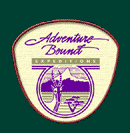















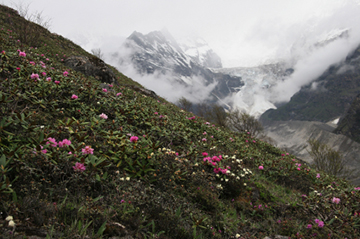
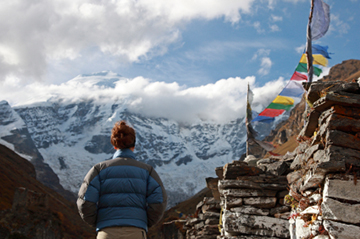
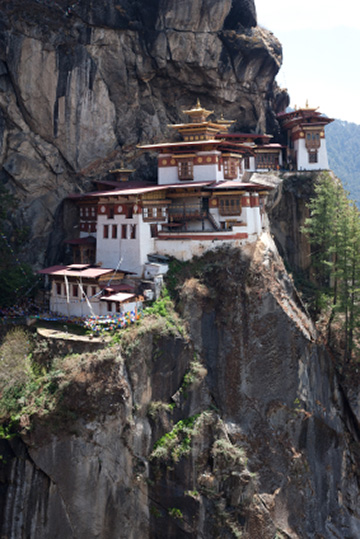
.jpg)
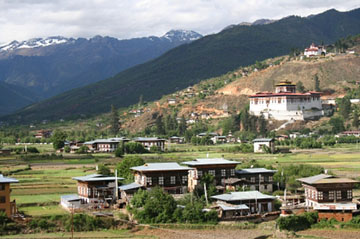
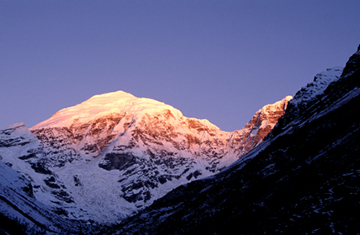
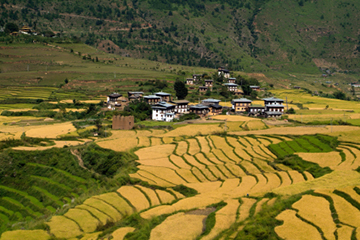
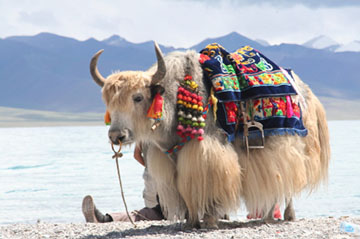
.jpg)
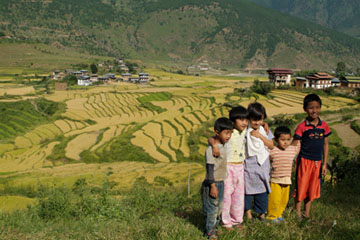
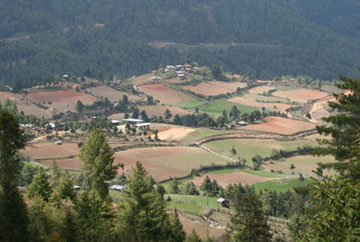
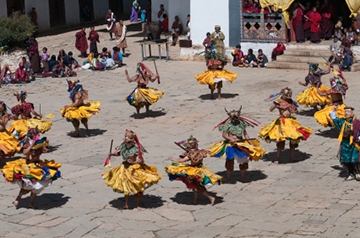
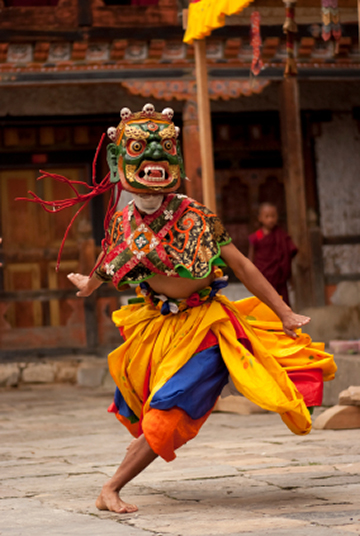
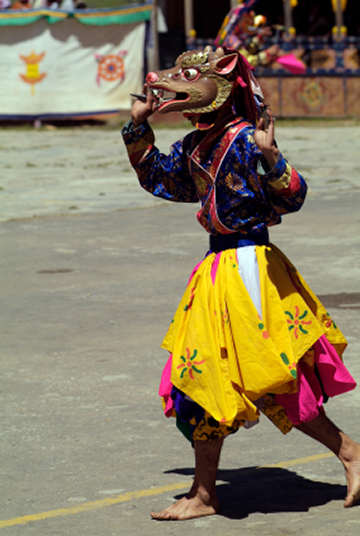
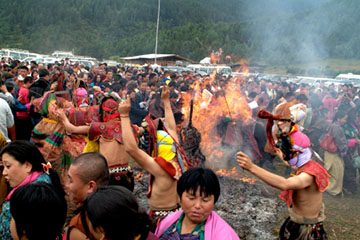
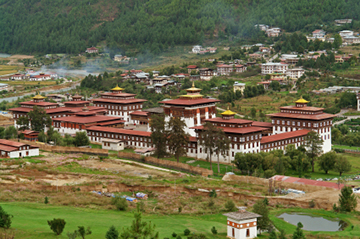
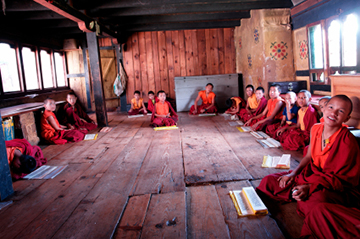
, Thimphu.jpg)
